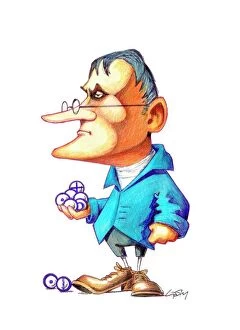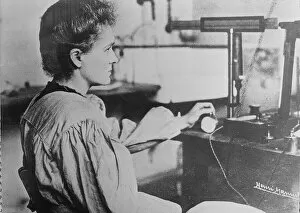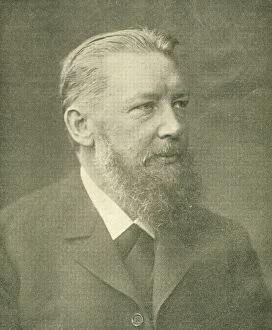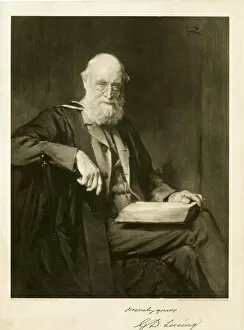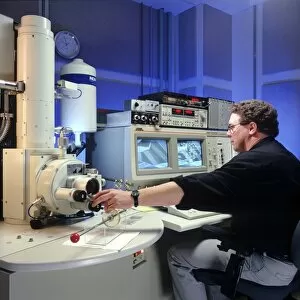Physical Chemist Collection
"Exploring the Boundaries of Matter: A Glimpse into the World of Physical Chemists" In the realm of scientific discovery
All Professionally Made to Order for Quick Shipping
"Exploring the Boundaries of Matter: A Glimpse into the World of Physical Chemists" In the realm of scientific discovery, physical chemists have played a pivotal role in unraveling the mysteries that lie within matter. From John Dalton's groundbreaking atomic theory to Marie Curie's pioneering research on radioactivity, these brilliant minds have shaped our understanding of the fundamental principles governing chemical reactions and interactions. Captured in a timeless black and white portrait, Marie Curie stands as an emblematic figure whose relentless pursuit of knowledge led her to become the first woman to win a Nobel Prize. Alongside her husband Pierre Curie, their laboratory became a sanctuary for innovation and exploration. Wilhelm Ostwald, another luminary in this field, contributed immensely to physical chemistry with his studies on catalysis and reaction rates. His dedication paved the way for advancements that would revolutionize industrial processes. The advent of cutting-edge technologies like Raman laser spectroscopy allowed scientists to delve deeper into molecular structures and vibrations. X-ray crystallography emerged as an indispensable tool for visualizing atomic arrangements within crystals, enabling researchers to unlock intricate details about various substances. With FE scanning electron microscopy and scanning transmission electron microscopy at their disposal, physical chemists could explore materials at unprecedented levels of detail. These powerful techniques opened new avenues for studying nanoscale phenomena and manipulating matter at its most elemental level. George Downing Liveing made significant contributions by investigating organic compounds' spectral properties through innovative experiments. His work laid essential foundations for modern analytical techniques used today. Advancements in technology also brought forth tools such as silicon cluster manufacturing devices—essential instruments facilitating breakthroughs in material science research. The ability to manipulate clusters has unlocked novel applications across various industries. As we continue our journey towards unlocking nature's secrets, physical chemists remain steadfast guardians at the forefront of scientific progress. Their unwavering curiosity pushes boundaries further every day – revealing hidden wonders that shape our world and redefine what is possible.

